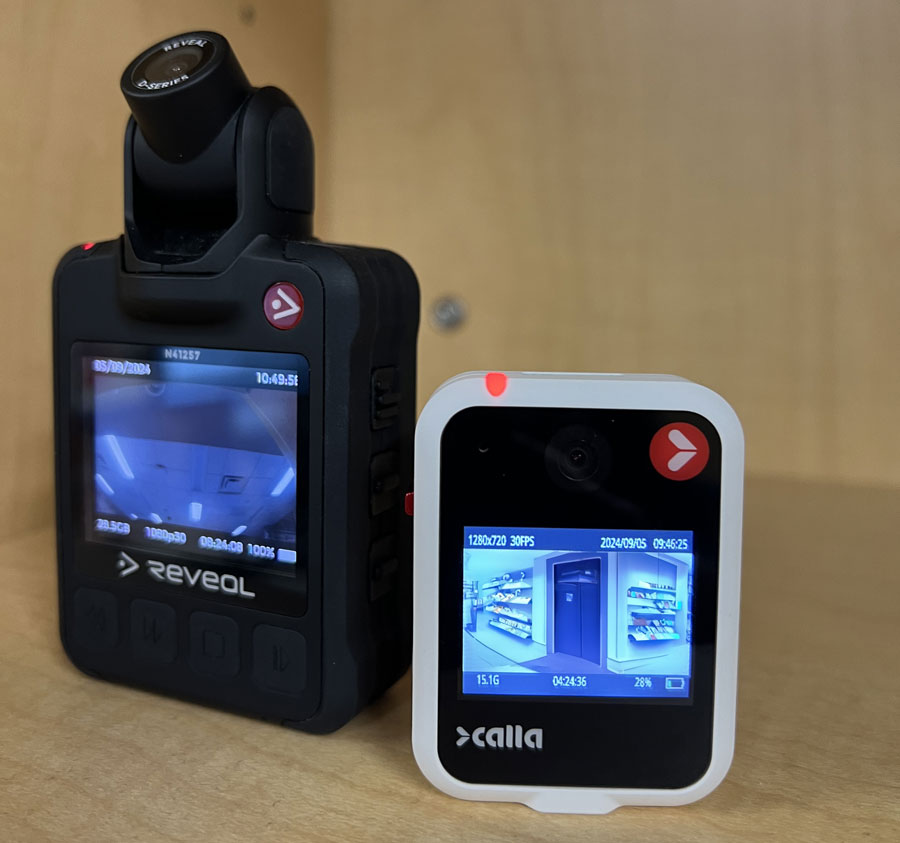Jimmy Hinshaw, Bailiwick’s director of sales, was on his way to a trade show in California earlier this year when he received a text from a client: “What time does your flight land?”
The client was eager to introduce Hinshaw to another vendor, a body camera and evidence management company, to discuss an urgent project for her discount department store chain: She hoped to deploy body cameras and tactical vests to employees at 300 locations across the country—in a matter of weeks.
“They were having folks come in and just take whatever they wanted and walk out of the store,” says Hinshaw. “It wasn’t casual shoplifters. We’re talking violent assaults.”
By equipping employees with body cameras at the highest-risk stores—about 15 percent of its 2,200 total locations—the goal was to thwart theft before it occurred. “The best way to win a fight is to not get into it to begin with,” says Hinshaw. “If a bad actor comes in, they will hopefully be deterred by the fact that there’s a camera with a public view monitor right there, on the employee. That was one of the big drivers of this initiative.”
An Effective Solution to a Widespread Problem

This department store isn’t the only retail chain to lean on body cameras to curb loss prevention and violence. In a National Retail Federation survey last year, 35 percent of U.S. retailers were looking into body cameras for employees, which recently became a reality at T.J. Maxx, Marshalls and HomeGoods.
As rates of violent theft continue to climb—it’s up 35 percent, according to the NRF survey—Hinshaw predicts the number of stores using body cameras will increase, and he believes Bailiwick can lead the charge on implementing that technology for clients.
After Bailiwick received the cameras from the manufacturer—hot off the assembly line and shipped overnight—Bailiwick had to configure them for each specific store site before sending out technicians to install them. “It was very complex,” says Hinshaw. However, once the cameras are onsite, they are simple for employees to use: They record automatically, and when plugged into a charger, video is instantly uploaded to a cloud-managed system for corporate to review.
“We see a lot of growth here in loss prevention,” Hinshaw says. “We’ve done a lot of loss prevention, but we could do a whole lot more. There’s a short window to capitalize on this need from a service revenue standpoint for our company. We want to be known as the people who are really good at problem-solving rapidly, and [with this project] I think we proved that.”
A Collaborative Effort
From the initial conversation Hinshaw had with the client in California to deploying the body cameras to 300 stores, the project took six weeks, a timeline that would have been unrealistic had it not been for the collaborative effort of all teams.
“Everyone was motivated and on task here,” says Chris Middlestaedt, a senior project manager for Bailiwick. “[The client’s] hardware supplier was getting us the equipment we needed in time. Our configuration center was turning it back around and out the door, and our scheduling team was getting our installers lined up. It was pretty amazing for the number of touches per day, but it all worked out because everyone was performing at this high level.”
A strong foundation with the client was also crucial to pull off this project in record time. For the past couple years, Bailiwick has provided this department store chain with operational technology like printers and PCs; networking and infrastructure switches to communicate data between the stores and the home office; and repairs, maintenance, and upgrades on other video recording devices the company uses.
This body camera project opened the door for more opportunities to work with the client, says Hinshaw. “The fact that people gave attention and time to this smaller but critical project—I can’t speak enough to how much that reflected the core values of our company. We were innovative and were really able to turn and burn on this project. There was a trust factor—the customers trusted that we would get it done, and I trusted the team would. And they did.”
